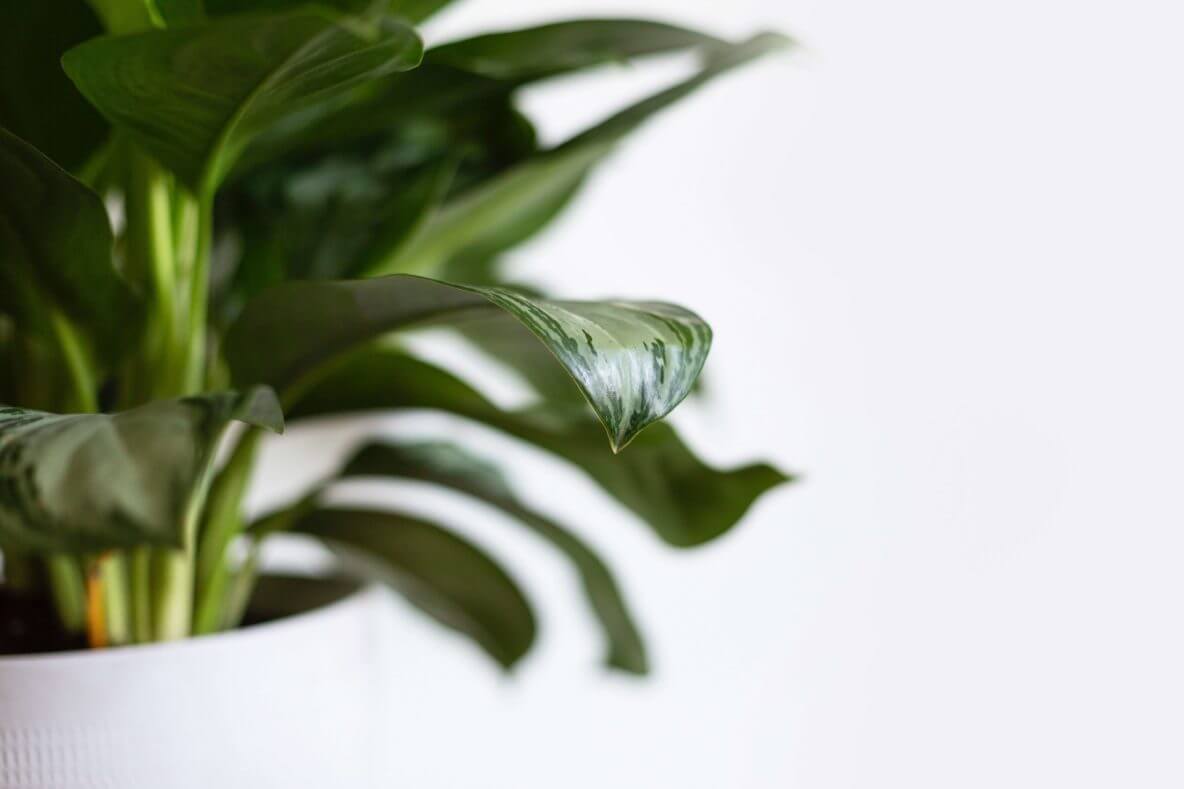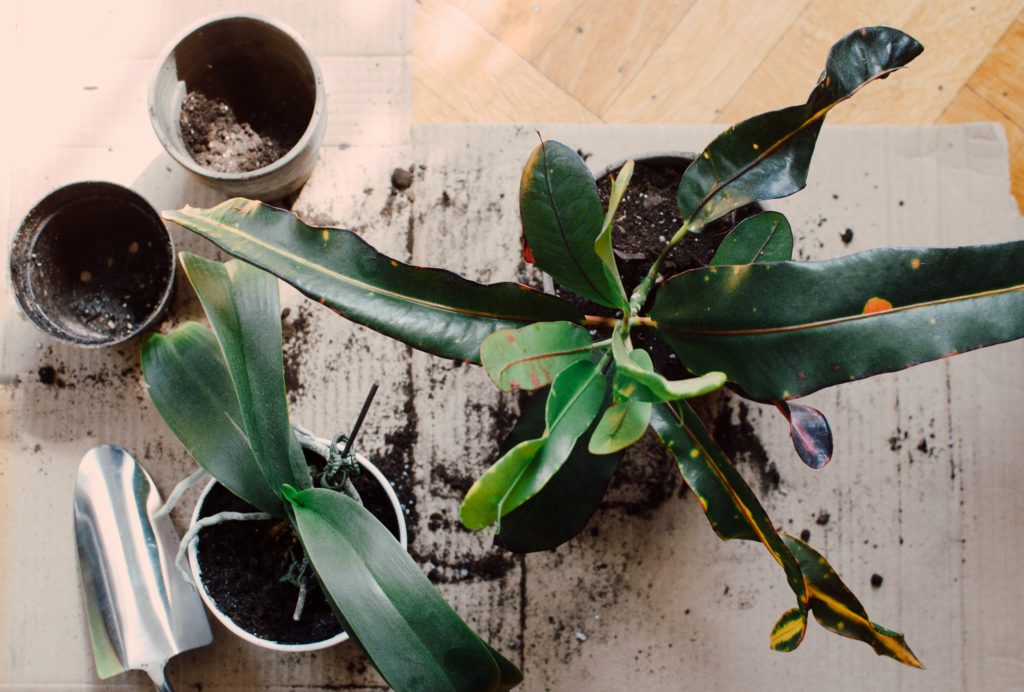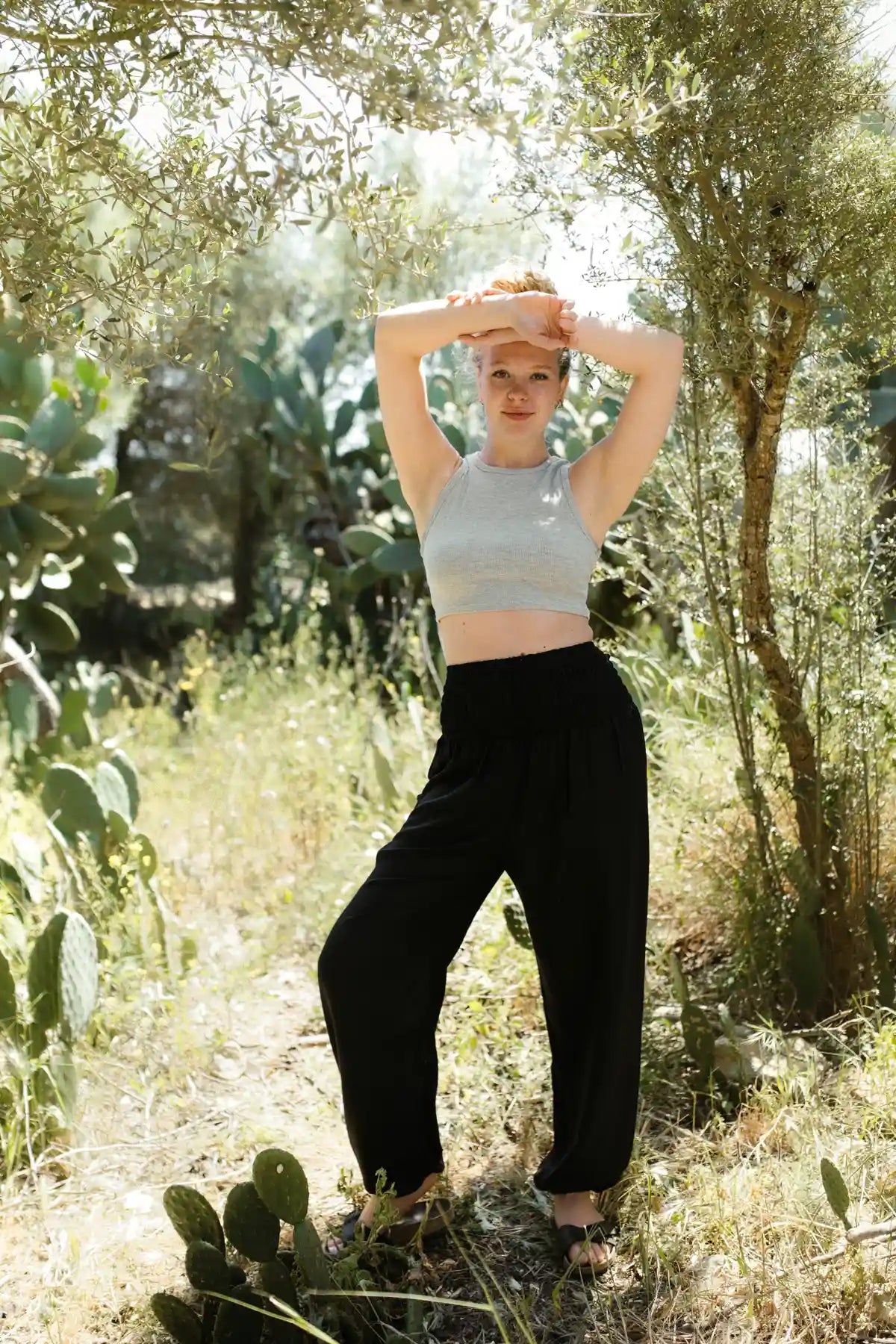
Inhaltsverzeichnis
Maintaining houseplants - that's how it works!
Plants and flowers not only make us happy when we encounter them outdoors in nature. They also add color, coziness, and vibrancy to our own four walls. Did you know that we feel better when we have flowers at home? You can find out more about this here. here read more.
Caring for your own houseplants isn't always easy. It takes consistency and sometimes a little patience to see them thrive. However, if you can practically watch your plants gradually die, you quickly become frustrated and feel like you've done everything wrong.
Therefore, I'd like to compile some useful tips that have saved some of my plants (and me) in the past, making houseplant care almost child's play. If I can do it, you can certainly do it too—because I certainly don't have a "green thumb," as the saying goes.
Everyone has their own way of dealing with things, and that certainly applies to houseplants. So if you have any tips or suggestions of your own, please share them with us in the comments below this post!
The purchase
Before visiting your local flower shop or nearest garden center, it's important to consider exactly where in your home or office you want to place the plant(s). Will it receive plenty of sun or is it rather shady? What's the temperature like? Knowing these things in advance makes the search for a suitable plant much easier: In the store, you can simply compare the plant's label with the conditions at home. This way, you can quickly see whether the basic requirements are met or not.
But it's not just the plant's label that you should consider. When you're at the nursery, there are a few other things to keep in mind:
If you've found a beautiful and suitable plant that you'd like to take home, it's a good idea to gently lift it out of its pot. This will give you a good idea of the plant's roots. If you can already see a lot of roots on the outside just by looking at it, it's a good idea to buy a larger pot and transfer the plant to it. This will give it more room to breathe and expand. Finding suitable pots is also part of properly caring for your houseplants!
The plain black inner pots you find at garden centers are usually not very decorative. It's worth looking for a more attractive planter or basket while you're there. This way, you can ensure that the plant fits the planter both visually and in terms of size.

The water drainage
A really important aspect of houseplant care is proper drainage. Therefore, the plant's pot should have holes in the bottom. Almost all plastic pots have holes right at the very bottom (literally, holes in the bottom). However, there are a few that have holes in the center of the pot, but with a circular recess around the bottom where water can collect. Accumulated water can cause the roots to rot and ultimately kill the plant. Therefore, we want the former—pots with holes actually at the very bottom of the container.
Repotting
As described above, plants can be repotted. This is especially useful when the plant is outgrowing its pot: The roots are already visible everywhere when the plant is lifted out of the pot. This is a sign that the plant needs more space to continue growing healthily.
However, some plants don't always tolerate a change in their environment well. To be on the safe side, you can use the following technique. This will make things easier for the plants and ensure that repotting is a smooth process in almost all cases.
The "technique" actually consists of just one step: Moisten the soil with water before placing it in the new pot. The soil should be moist enough to stick together (but not soaking wet). That's it!
The moist environment encourages the plant's roots to expand and explore the new environment, helping the plant settle more quickly into its new surroundings.
The new pot is then lined with moistened soil along the bottom and sides as usual. Then, the plant is placed inside and covered with a little more moist soil. Finally, water the plant again to ensure the old (original) soil also gets some moisture!

The right watering
Caring for houseplants naturally includes watering. Overwatering or underwatering is probably the most common cause of plant death. This is because our houseplants don't all have the same water needs. These rules of thumb can help:
- How often should I water?
The soil shouldn't be consistently moist, but should dry out quite a bit between waterings. Insert your finger a few centimeters into the soil. If the soil is still moist at your fingertips, you don't need to water. If it's dry, however, it's time for the next watering. - How much should I water?
Most plants don't like wet feet. Therefore, you shouldn't let a pool form on the saucer when watering. Water until a small amount of water collects on the saucer. If a small amount of water does occur, you can always pour it off. - And otherwise?
Houseplants intuitively need more regular watering, especially in the spring and summer months, than in the colder months. But when it gets hot outside, plants not only require more water—they also like the water a bit cooler than in winter. In winter, however, the water should be at room temperature, not warm.
The diet
We know that plants need light, soil, and water to thrive. What we sometimes forget, however, is that plants also need fertilizer. Fertilizer is like food for plants. Of course, every plant is different here, too. But on average, you should "feed" your houseplants every 2-4 weeks in spring and summer. In winter, however, plants need rest and therefore usually don't need to be fertilized at all.
The light
Some plants need light, while others prefer shade. Regardless, all plants need a natural light source.During cold winter days, you may want to move your plants closer to a light source. However, you should be cautious about doing this, as many plants don't like changing their location. They become accustomed to their surroundings. So only move your plants when absolutely necessary.
The temperature
Another point to consider when caring for houseplants is the plant's ambient temperature. Like humans, plants prefer temperatures within a comfortable range.
Keep in mind that plants placed in front of a window are often exposed to very different temperatures. The same applies to plants placed near a heater or air conditioner.
The care
Insects and beetles love dead and decaying foliage. Therefore, you should remove any fallen leaves that are now lying on the ground. Even if you see that individual leaves or stems are about to die, you should cut them off. This way, they can't steal valuable nutrients from the still healthy leaves, and the plant will thrive overall.
Insects and unwanted animals
When you're watering your plants, you should regularly take a moment to check the leaves/stem of the plant for small insects. If you find any, it's best to take care of them immediately (as with so many things in life). If you suspect something but don't know exactly what kind of insect is infesting the plant, you can of course either google it or ask a garden center. Many of the small pests can be removed with a mild soap solution. Simply spray the leaves with the soapy water and then wipe them off with a damp cloth. You may have to repeat this process a few times. However, with aphids, for example, the plant is usually free of the infestation after the first application.
If you experiment with new plants, try things out a bit, and things go wrong, don't be discouraged. Some houseplants aren't easy to care for, and some will die—that's the cycle of life. And yet, you'll improve and learn with each new experience!
Another option, of course, is to adapt the type of plant to your own skill level. Succulents and ivy, for example, don't require extensive care, as they're less fussy and demanding than many other houseplants...
If you would like to learn more about sustainability, mindfulness or healthy eating, take a look here over.


























Leave a comment
This site is protected by hCaptcha and the hCaptcha Privacy Policy and Terms of Service apply.